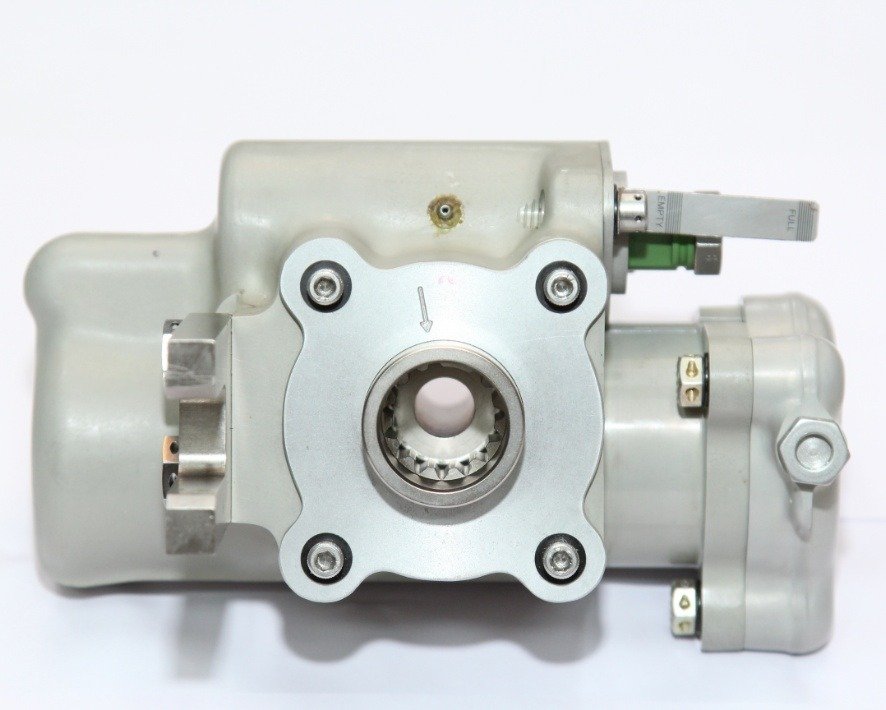Have you ever wondered how aeroplanes fly so smoothly across the sky? Besides wings and engines, they also have other aeroplane engine parts, such as the jet engine fuel pump, that help them work properly.
Each part plays its role in getting the plane to fly safely, and the pump, in particular, ensures the engines get the right amount of fuel at the correct pressure.
This piece looks into the different types of fuel pumps and their location and usage in planes.
1. Centrifugal Fuel Pumps
Whenever a spinning top spins fast, it pushes things away from it. Well, centrifugal fuel pumps work similarly. They have spinning blades that push fuel outwards, making it move more quickly and build up pressure. These pumps are great for the big aeroplanes you see at the airport because they can handle a lot of fuel at once.
How They Work:
Inside a centrifugal fuel pump, the part that spins is called an impeller. This pump’s fan-like structure operates by sucking in fuel and throwing it outwards, making the fuel move faster and pressurising it so that it gets ready to go into the engine.
Where They Are Used:
You will find centrifugal fuel pumps in big aeroplanes with powerful engines, like those used for long flights. They are essential for ensuring the machines run smoothly and efficiently without hiccups.
2. Gear Fuel Pumps
These pumps work a bit differently. Instead of spinning blades, they use gears, like the ones you might find on a bicycle.
How They Work:
Picture two gears fitting together perfectly. As they turn, they create little pockets that trap fuel and move it along. Like a tiny conveyor belt for fuel, these pumps are also smaller.
Where They Are Used:
Gear fuel pumps are great for small aeroplanes, like those used for short trips or training flights. They are also handy for providing extra power to things like lights or air conditioning when the main engines are shut off.
3. Piston Fuel Pumps
Piston fuel pumps consist of several hollow pistons. Like the ones you might find in old-fashioned cars, each piston has spring-loaded inlet and outlet valves. They use moving pistons to suck in fuel and push it out. While they might not be as fancy as other pumps, they are reliable and do the job.
How They Work:
Picture a piston moving up and down inside a tube. As it moves down, it creates a vacuum that sucks in fuel. As it moves up, it pushes the fuel out.
Where They Are Used:
You will mostly find piston fuel pumps in older aeroplanes or in special projects where people want to keep things traditional. They might be rare, but they still do a great job of keeping the engines running smoothly.
4. Electric Fuel Pumps
Last but not least, let us talk about electric fuel pumps. These pumps use electricity to do their job, which makes them super easy to control and efficient.
How They Work:
Instead of spinning blades or gears, electric fuel pumps use motors to push fuel along. They can be likened to the engines in remote-controlled cars, but instead of making the car move, they move fuel around. They can be switched on and off whenever needed, making them handy.
Where They Are Used:
Electric fuel pumps are used in newer aeroplanes with fancy digital controls. They are great for ensuring the engines get the right fuel at all times, which helps them run efficiently and smoothly.
Conclusion
Fuel pumps might not be the most exciting part of an aeroplane, but they are crucial for keeping everything running smoothly. Whether it is the big centrifugal jet engine fuel pump or small electric ones, each type has its job. By understanding how they work and where they are used, we can appreciate the incredible technology that keeps aeroplanes flying safely through the sky.
